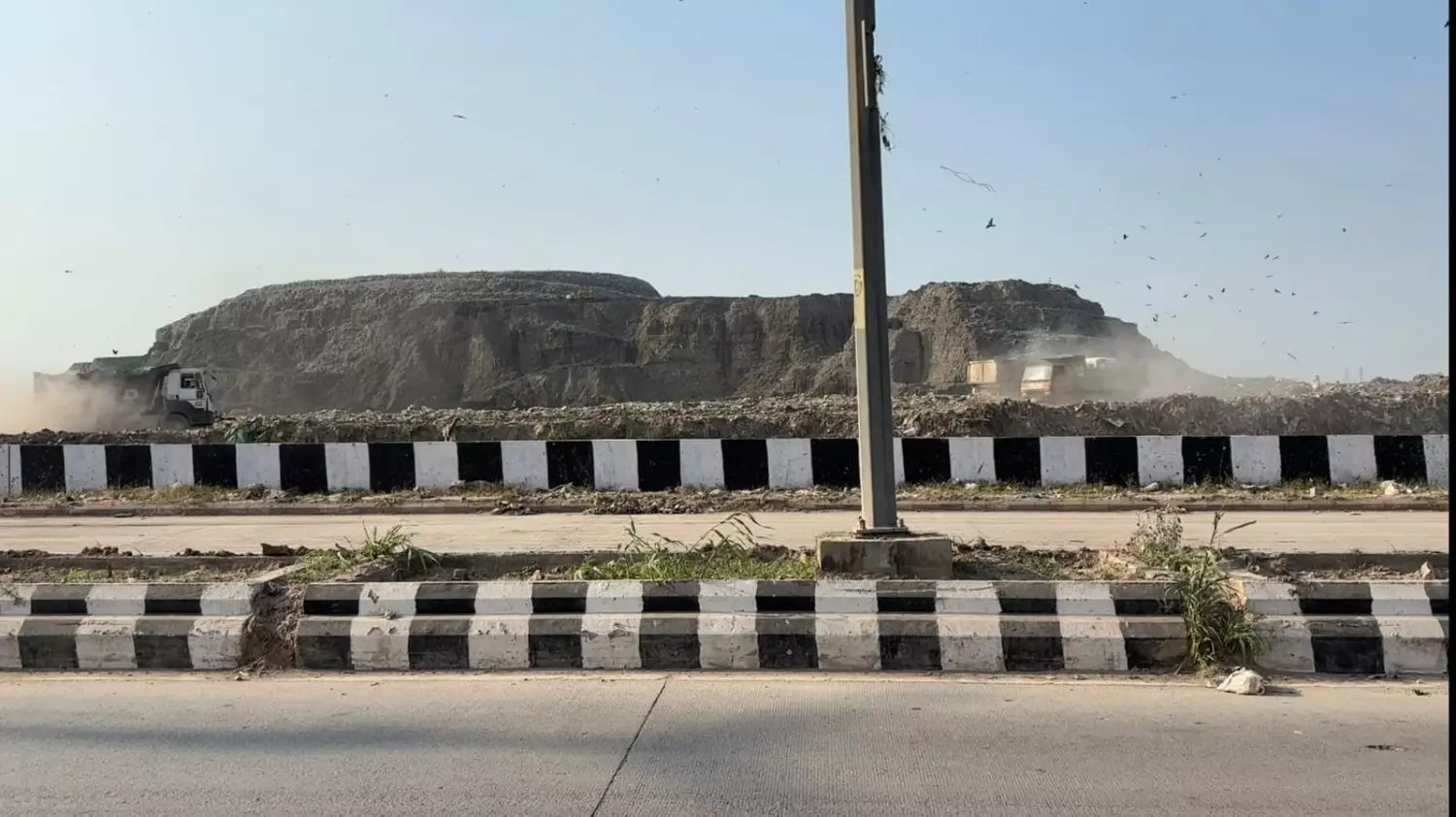
Delhi’s growing population and garbage mountains: What’s the solution?
The towering garbage mounds in Delhi have not only become a political issue but also a pressing civic problem. The question is: will the attempts to eliminate them ever succeed?

India now has the world’s largest population. Among the country’s metro cities, Delhi is the most populous. A significant reason for this is the steady stream of migrants arriving each year. The fact is, very few of them return to their hometowns; most choose to stay back and work in the national capital. As a result, the growing population continues to put immense pressure on Delhi’s basic infrastructure.
Despite the construction of flyovers to ease traffic, congestion remains a daily nightmare. Yet, even more daunting are the garbage mountains located at three corners of Delhi. They have repeatedly featured in election promises, with governments pledging to remove them. Although some work has been done and the height of these mounds has reduced marginally, they are far from gone.
Also read: Delhi residents slam garbage collection user-charges link to property tax
This article looks at whether a solution is possible at all. The Federal visited all three landfill sites and also spoke with experts for ground-level insights.
Need for political will and public cooperation
Dr. Tribhuvan Bisht from the Centre for Science and Environment (CSE), who has researched dumping sites, stresses that political will and community participation are critical to eliminating garbage mountains. Some Indian cities, like Bhubaneswar (Odisha), and Indore (Madhya Pradesh), have managed to do it successfully.
In Delhi, residents were urged to segregate waste at source — wet and dry separately. However, in practice, this hasn’t worked. Waste still reaches landfills mixed, making treatment far more time-consuming.
Also read: How Bengaluru’s garbage is ruining lives of villagers in Karnataka’s Doddaballapur
According to Dr. Bisht, Delhi’s three dump sites together hold an estimated 160,000 tonnes of waste — about 16 crore kilograms. Treating (remediating) a single tonne costs Rs 600-800. By this estimate, the total expense would exceed Rs 100-130 crore.
The government has ramped up efforts, especially under Swachh Bharat Mission 2.0, but a fundamental problem persists: for every tonne processed daily, about 1.2 tonnes of fresh waste arrive. Unless households truly begin segregation — wet waste separate from dry — these mountains will never disappear. If wet waste doesn’t reach the landfills, remediation can accelerate dramatically.
The Municipal Corporation of Delhi (MCD) has contracted private firms to handle the treatment of landfill waste. Generally, the waste is processed into compost for agricultural use, or the residue is used for road and construction fill.
Also read: BMW driver arrested after Delhi crash kills finance ministry officer; family cries foul
However, Dr. Bisht warns that compost from decades-old mixed waste is risky. While it contains nitrogen, which benefits soil, it is also laced with hazardous contaminants — biomedical waste, chemical residues, and more. Over time, such compost can harm soil health instead of improving it.
Health hazards for residents
Dr. Ajay Lekhi, who has studied the Ghazipur landfill site, says groundwater within a three-kilometre radius is severely contaminated. Tests revealed carcinogenic substances at alarming levels. Residents of Kondli, Ghazipur, and Gharoli Dairy Farm face high health risks, including cancer.
Lead levels in the water were found so high that even RO purification cannot remove them. Bathing in this water can cause skin diseases. Though the government has banned hand pumps in the area, illegal borewells remain.
Toxic gases from the landfills pollute the air, causing respiratory problems. Additionally, vultures and kites feeding on meat scraps scatter them into residential areas, further raising the risk of infection.
Migrants are both a problem and a necessity
The reasons vary. Many students arrive for higher education, youth for jobs — whether government exam preparation, corporate careers, or daily-wage work. Labourers migrate to sustain their families through construction and other essential services.
Dr. Bhaswati Das, Associate Professor at Jawaharlal Nehru University’s (JNU) Centre for the Study of Regional Development (CSRD), says migration is a paradox. On one hand, migrants swell urban populations and add pressure on resources. On the other, no big city can function without them.
Delhi, being the national capital, naturally attracts large numbers. It offers not only jobs but also premier education. With several central universities and private institutes, Delhi draws students from across the country. At the same time, labourers arrive in droves to power the city’s construction and daily service needs.
More migrants arrive than return
Dr. Das points out that while no census has been conducted after 2011, post-COVID migration has visibly surged. Delhi government estimates suggest the population stood at 21 million in 2021. Migrants grew from 2.2 lakh in 2020 to 2.83 lakh in 2021. The trend continues yearly, with far fewer people returning home.
Delhi’s geography offers limited land and water resources. As population swells, these fall short. Roads and flyovers can be built, but ensuring clean drinking water for all is a challenge. Clean air is equally elusive, with vehicles, construction dust, and industrial emissions choking the city.
By contrast, Mumbai, another migrant-heavy city, does not face Delhi’s scale of landfill or pollution crises. Its coastal geography helps disperse pollutants, and it has more space to manage waste away from residential zones.
Most migrants come from UP, Bihar
According to Dr. Das, nearly 70 per cent of migrants in Delhi hail from Uttar Pradesh and Bihar, primarily working in construction.
The government plans to shift such workers to Delhi’s outskirts. However, for this to succeed, affordable and efficient public transport will be essential so they can continue commuting into the city for work.
(This article was originally published in The Federal Desh)

